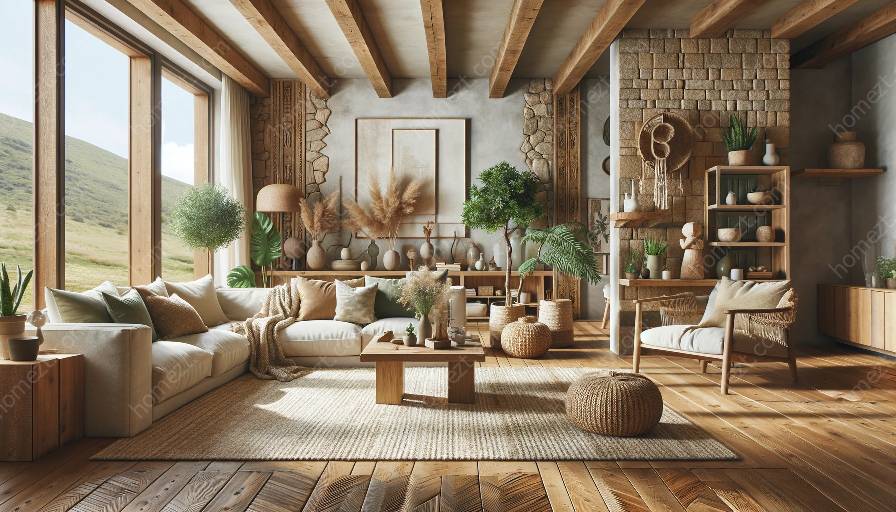When designing outdoor living spaces, using natural materials for decoration can add warmth and authenticity to the space. This article discusses the considerations for using natural materials, along with tips for decorating with these materials to create an attractive outdoor environment.
Choosing the Right Materials
When using natural materials in outdoor living spaces, it's essential to consider the climate and weather conditions of the area. For instance, hardwoods such as teak and cedar are well-suited for outdoor furniture due to their durability and resistance to rot and decay. Stone and bamboo are also popular choices for outdoor decor due to their natural beauty and resilience.
Integration with Surroundings
Decorating with natural materials should complement the surrounding environment. For example, using locally sourced stone for pathways or incorporating native plants and flowers into the design can enhance the space's connection to the natural surroundings.
Maintenance and Longevity
One consideration when using natural materials is the maintenance they require. Understanding the upkeep needed for specific materials can ensure the longevity and sustainability of the outdoor space. For instance, treating wooden furniture with protective coatings and regularly cleaning stone surfaces can prolong their lifespan.
Harmonizing with Architecture
It's important to consider the architectural style of the outdoor space when choosing natural materials for decoration. Harmonizing the materials with the existing architectural elements can create a cohesive and visually appealing design. For example, using reclaimed wood for a rustic-themed outdoor living area or incorporating sleek and modern metal accents for a contemporary space.
Create Texture and Visual Interest
Decorating with natural materials offers an opportunity to create texture and visual interest in outdoor spaces. Utilizing a mix of materials such as wood, stone, and plant-based elements can add depth and diversity to the design. Incorporating tactile experiences, such as a natural stone wall or wooden pergola, can further enhance the outdoor living experience.
Sustainability and Eco-Friendliness
Consideration should be given to the environmental impact of the natural materials being used. Choosing sustainable and eco-friendly options, such as reclaimed wood, recycled metal, or responsibly sourced stone, can align the outdoor living space with environmentally conscious practices.
Balance and Cohesiveness
When decorating with natural materials, achieving a balance and cohesiveness in the design is crucial. Balancing different textures and tones, as well as coordinating the colors of natural materials with the overall color scheme, can create a harmonious and inviting outdoor living space.
Blending with Functional Elements
Natural materials can be integrated with functional elements in outdoor living spaces, serving both aesthetic and practical purposes. For example, using natural stone for a fireplace feature or incorporating wooden benches with built-in storage can combine functionality with natural aesthetic appeal.
Embracing Imperfections and Patina
One of the captivating aspects of natural materials is their ability to develop a patina and imperfections over time, adding character and charm to the outdoor space. Embracing the natural aging process of materials such as wood or metal can enhance the authenticity and appeal of the outdoor living area.
Conclusion
In conclusion, utilizing natural materials in outdoor living spaces involves several considerations, including material selection, integration with surroundings, maintenance requirements, architectural harmony, texture creation, sustainability, balance, blending with functionality, and embracing natural aging processes. By carefully addressing these considerations, outdoor living spaces can be transformed into inviting, visually appealing, and sustainable environments that harmonize with the natural world.






































